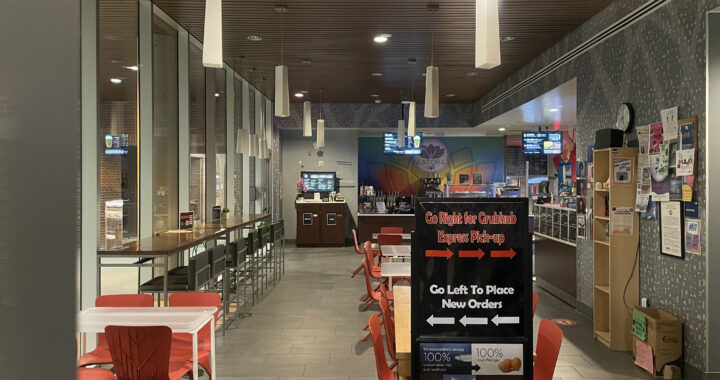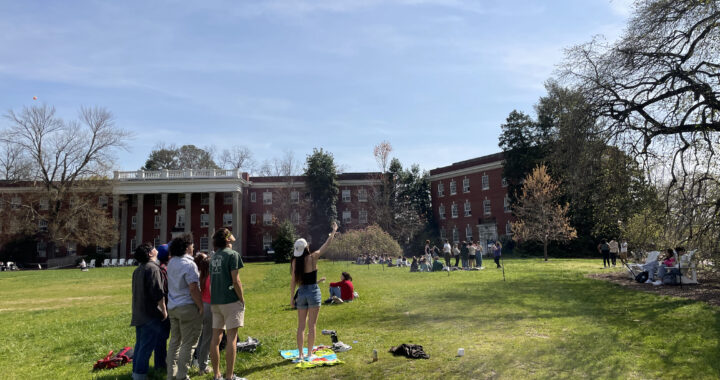Accessibility of Shared Walking Trails and Paths Around UMW
3 min read
The Virginia Central Railway Trail is one of many accessible trails in Fredericksburg | Kyle Close
By Kyle Close
STAFF WRITER
Accessibility to outdoor recreation is often an issue that can leave individuals who have mobility or physical disabilities at a disadvantage when it comes to enjoying nature or getting exercise. Especially with fall in full swing and foliage about to be at peak color, knowing what trails and paths around campus are most accessible can help students get out of their dorms and enjoy what Fredericksburg has to offer.
One of the many things that makes UMW great is its location in the heart of Fredericksburg. The city of Fredericksburg helps maintain over 12 miles of dedicated paths and trails for individuals to use. Several of those trails have paved access points that are close to campus and can provide a nice escape from one’s dorm or studying. To find out more in depth information about the current condition of the trails, any closures, or potential accessibility issues, Fredericksburgva.gov is a great resource. As with any shared path or trail, individuals need to be aware and mindful of their surroundings while on or accessing the path.
Rappahannock Canal Walk
The closest and most accessible path to UMW is the Rappahannock Canal Walk. With access points on either side of Route 1, the Rappahannock Canal Walk provides an excellent opportunity for UMW students to enjoy the fall foliage from a path that is flat, paved, and away from traffic. The main consideration for UMW students would be accessing the path itself, as the access points are about 500 meters north of the College Avenue & Route 1 intersection. The sidewalk leading down to the access points might be too steep for some students and should be taken into account before venturing out. The paths leading from the sidewalk to the Canal Walk also have an incline, although the Eagle Village side access point has less of an incline and seems to be more wheelchair accessible. As the name suggests, the path is situated along a canal that leads directly to the Rappahannock River. Once on the path, users will find that it is flat with little rise or fall in elevation, making it a great way to get some exercise and see the fall colors. The path runs directly under Route 1 and connects to the Rappahannock River Heritage Trail, which provides pedestrians with an easy and safe way to see the river.
Rappahannock River Heritage Trail (RRHT)
Perhaps the best known and heavily used path in Fredericksburg is the Rappahannock River Heritage Trail. The trail picks up a little less than a mile from UMW and takes a scenic route along the Rappahannock River, running adjacent to Riverside Drive, Fall Hill Avenue and Caroline Street. The RRHT is 1.3 miles long and connects to the Rappahannock Canal Walk at Fall Hill Avenue. The path runs under Route 17 and Fall Hill Avenue, which limits difficult or unsafe street crossings. The path is separated from the street and is marked down the middle to help the flow of cyclists and pedestrians. Cyclists tend to use this path regularly and can make using the path a little difficult at narrow points, but overall the path is wide enough to accommodate traffic on both sides. The RRHT has benches every few hundred feet that are next to the trail that provide a great viewing experience.
Virginia Central Railway Trail (VCRT)
Located just under one mile from the UMW Bell Tower, the start of the VCRT picks up in a small parking lot at the intersection of Lafayette Blvd. & Essex Street. Much like the previous trails, the VCRT is a flat path that is well maintained with steady foot and bicycle traffic throughout the day. The main consideration for the VCRT is that it goes over the Blue & Gray Parkway, which might be off-putting for some, though the path does have a crosswalk with a dedicated crossing sequence. The three mile trail leads through Alum Springs Park and to Route 1. Alum Springs Park itself is not very accessible, but is still beautiful during the fall months with dense pockets of trees on either side of the trail. For added benefits, the trail has a water fountain and benches for resting or enjoying the fall scenery.











